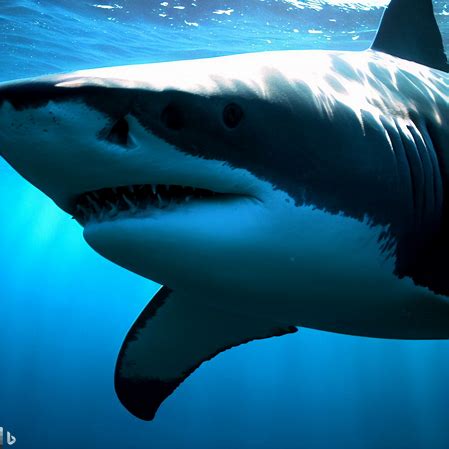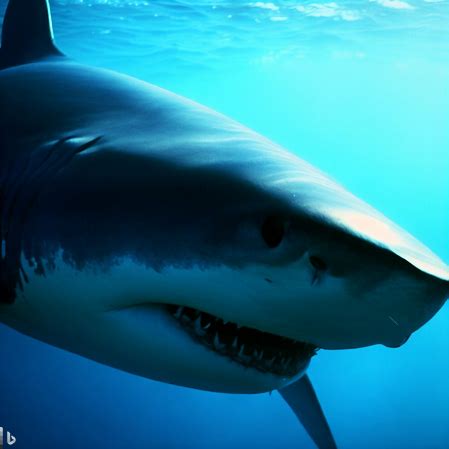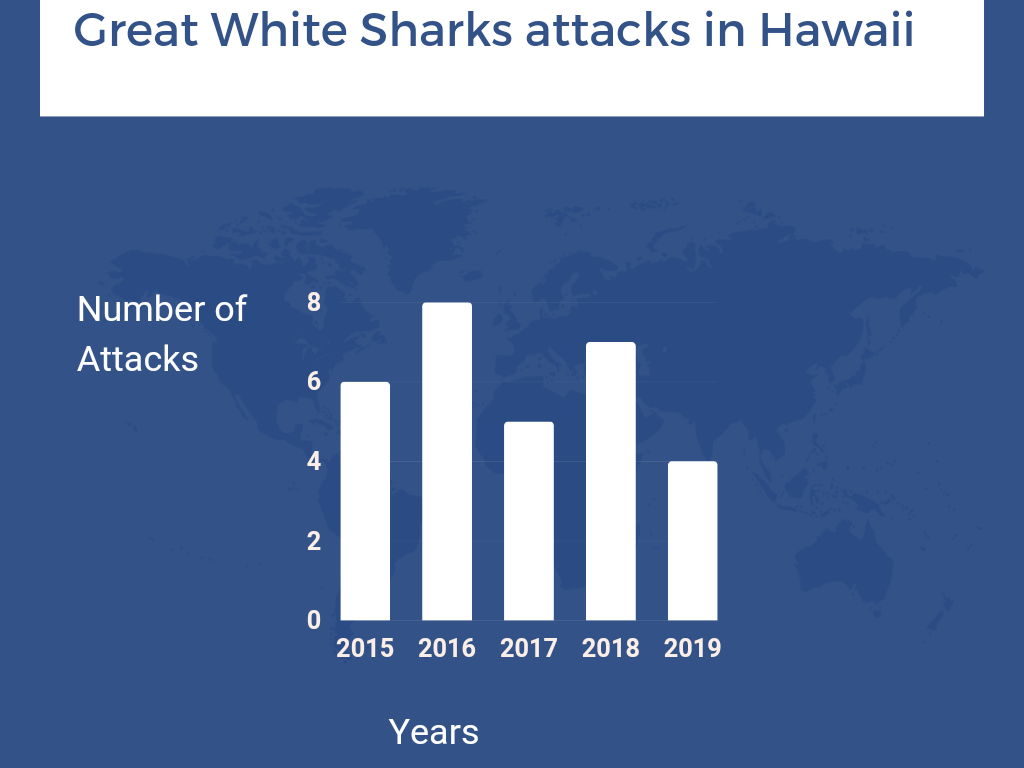
Key Takeaways
- Great white sharks are not commonly found in Hawaiian waters, but recent sightings suggest that their presence may be increasing.
- The presence of great white sharks in Hawaii poses potential risks to both humans and marine life, as they are apex predators known for their powerful jaws and hunting abilities.
- The increase in great white shark sightings in Hawaii may be attributed to various factors, including changes in ocean temperatures and prey availability.
- It is important for beachgoers and water enthusiasts in Hawaii to be aware of the potential presence of great white sharks and to take necessary precautions to ensure their safety.
- Conservation efforts and research initiatives are crucial in understanding the behavior and migration patterns of great white sharks in Hawaii, which can help in developing effective strategies for their protection and coexistence with humans.
The Hawaiian islands have crystal-clear waters, perfect for the majestic Great White Shark. These awe-inspiring creatures have captured the attention of ocean lovers from all around the world. Let’s explore their presence in Hawaii and uncover some facts!
The Great White Shark is referred to as Carcharodon carcharias. It’s a powerful creature of the ocean, usually found in colder areas like Australia and South Africa. But, they have surprised us by showing up in Hawaii! With their sharp teeth and sleek bodies, they inspire both fear and respect.
These sharks are not just a tourist attraction. They play a vital role in the marine ecosystem as apex predators. By regulating population numbers, they help maintain balance. Plus, by studying their behavior and movements, we can learn valuable information about ocean health.
Luckily, encounters with Great White Sharks in Hawaii are rare. They are occasionally seen near shorelines, but incidents with humans are very uncommon. Respect and understanding must be given to these creatures.
One notable event that happened in 2013 was when a 15-foot female shark was caught off Oahu’s North Shore. Researchers studied its size and behavior extensively. This was an incredible reminder of the beauty and power of the Great White Shark.
The presence of Great White Sharks in Hawaii
The Great White Sharks of Hawaii are a topic that sparks curiosity in both locals and tourists. They’re renowned for their power and immense size. Let’s explore some facts about these amazing creatures!
Size: Up to 20 feet (6 meters) long.
Weight: Up to 5,000 pounds (2,268 kilograms).
Diet: Mainly seals, sea lions, and fish.
Behavior: Ambush predators with quickness and agility.
Range: Found in various places, including Hawaii.
Populations: Small numbers near the islands.
Surprisingly, Hawaii’s not a primary home for the Great White Shark. Though they’re sometimes seen here, it’s rare compared to other spots like California or South Africa. However, sightings have grown lately due to ocean temperatures and prey sources.
If you’d like to catch a glimpse of these majestic creatures during your holiday, remember they usually hang out in deeper offshore areas instead of shallow coastal areas. To get the best chance, consider joining shark-spotting tours or charters.
Pro Tip: Remember that Great Whites are protected in many places, including Hawaii. Respect their habitat by watching them from a distance and avoiding any activity that may disturb or hurt them.
The habitat and behavior of Great White Sharks
Great White Sharks: Insights into their Habitat and Behavior
These majestic creatures, the Great White Sharks, can be found in various parts of the world, including Hawaii. Their habitat primarily consists of coastal and offshore regions with temperate waters. Known for their predatory nature, they display unique behaviors that set them apart from other shark species.
These formidable predators are highly adaptable and can be found in both shallow and deep waters. They are known for their ability to swim at incredible speeds, reaching up to 35 miles per hour. Great White Sharks are skilled hunters, employing techniques such as breaching and spy-hopping to catch their prey. Their diet primarily consists of marine mammals, such as seals and sea lions, as well as other marine creatures like fish and turtles.
One unique behavior exhibited by Great White Sharks is their ability to migrate over long distances. They travel thousands of miles in search of food and suitable breeding grounds. This remarkable migratory behavior showcases their exceptional navigational skills and their ability to survive in diverse ecosystems.
To witness the awe-inspiring habitat and behavior of Great White Sharks firsthand, adventure seekers can embark on thrilling shark diving expeditions. These experiences offer a rare opportunity to observe these magnificent creatures in their natural environment, providing a deeper understanding of their habitats and behaviors.
If you dare to venture into the depths of the ocean, you too can be captivated by the sheer power and grace of these majestic predators. Don’t miss out on the chance to encounter the Great White Sharks and gain a newfound appreciation for the wonders of the marine world.
Move over surfers, there’s a new toothy tourist in town – Great White Shark sightings in Hawaii add a thrilling twist to the island paradise experience.
Great White Shark sightings in Hawaii
The Great White Shark’s presence in Hawaiian waters has been marked by a few sightings over recent years. In 2015, two Great Whites were seen off the coast of Oahu – a rare occurrence that surprised researchers and locals alike.
Four sightings were reported near Maui in 2016, signifying that these majestic creatures aren’t exclusive to any particular area.
The following year, one sighting was observed off Kauai, emphasizing the need for caution and respect when exploring the beautiful islands.
A group of divers off the coast of Maui encountered a large female Great White Shark while exploring a popular dive site. Despite their initial fear, the divers remained calm and maintained their distance, allowing them to observe this creature gracefully navigate through the water before it disappeared.
The unpredictable nature of Great White Sharks in Hawaii continues to captivate and intrigue those fortunate enough to witness them. It is vital that we approach their habitats with respect and awe, ensuring their continued existence for generations to come. The Great White Shark’s impact on the local ecosystem is like a reality TV show gone wrong – they’re the divas, and the other marine creatures are just trying to avoid being eaten.
The impact of Great White Sharks on the local ecosystem
Great White Sharks: Impact on the Local Ecosystem
Great White Sharks exert a significant influence on the local ecosystem. Their role as top predators plays a crucial part in maintaining the balance of marine life. Through their predatory behavior, they regulate the population of prey species, preventing overpopulation and ensuring biodiversity.
The presence of Great White Sharks in Hawaii has both direct and indirect effects on the ecosystem. Directly, they control the population of seals, sea lions, and other marine mammals, which are their primary food source. By preying on these animals, sharks help maintain a balanced population and prevent the depletion of certain species.
Indirectly, Great White Sharks influence the behavior and distribution of their prey. The fear of predation alters the movement patterns of seals and sea lions, making them more cautious and avoiding certain areas. This redistribution of prey species has a cascading effect on the entire marine ecosystem, affecting the abundance and distribution of other organisms.
It is important to note that Great White Sharks are also scavengers, feeding on carrion and prey that other predators have already caught. This helps in the decomposition process, recycling nutrients back into the ecosystem.
A true story regarding the impact of Great White Sharks on the local ecosystem involves a decrease in the seal population on a certain island. As the number of sharks increased in the area, seals started avoiding the island, causing a decline in their numbers. This had a ripple effect on the ecosystem, resulting in changes in prey availability for other predators and altering the overall balance.
The presence of Great White Sharks in Hawaii has far-reaching implications for the local ecosystem. Understanding and acknowledging their importance as top predators is crucial for maintaining the delicate balance of marine life and preserving the biodiversity of the region.
Hawaii’s menu just got a little more dangerous – Great White Sharks aren’t here for the hula, they’re here for the prey.
Prey species of Great White Sharks in Hawaii
Great White Sharks in Hawaii have a wide range of prey species. These powerful predators have a huge effect on the marine food web. They hunt marine mammals like seals and sea lions. Hawaiian monk seals, a critically endangered species, are particularly vulnerable to predation by sharks. Turtles are also a part of the diet of these sharks. They keep the population size of sea turtles in check. Fish species like tuna and swordfish are also targeted by them.
The different hunting strategies of these sharks give more understanding of their ecological niche. For example, some specialize in ambushing seals near shallow coastal areas while others are better at hunting open-water prey. This shows their adaptability and flexibility as top predators.
In recent years, there have been more reports of humans encountering Great White Sharks in Hawaii. This has sparked both fear and interest. Researchers and locals are now trying to understand these creatures’ behavior and their impact on the environment. Great White Sharks are making conservation efforts easier and more effective.
Conservation efforts and regulations
Conservation initiatives aim to reduce human-induced harm to great white shark populations. Regulations and educational campaigns are in place to control poaching and overfishing. Scientists, researchers, and government organizations have gained advances in understanding the shark’s behavior and ecology. Satellite tagging has provided data on migration patterns and habitat use.
False Bay, South Africa is a great example of conservation success. Unsustainable fishing practices were reducing the shark population. Fisheries had to be regulated to protect the habitats and prey species. The sharks have returned to their natural abundance.
This shows that proactive conservation measures can benefit both predator and prey. Thrill-seekers beware!
The danger and risk of encounters with Great White Sharks

The potential peril and hazards of encounters with the legendary Great White Sharks invoke a sense of trepidation and uncertainty. These apex predators, known for their formidable size and strength, can pose a considerable threat to humans in their natural habitat. Understanding the danger and risks associated with such encounters is crucial for individuals venturing into waters inhabited by these awe-inspiring creatures.
Delving further, it is important to appreciate that the danger and risk of coming face-to-face with Great White Sharks are undeniable. These formidable creatures have been known to display predatory behavior towards humans, especially when mistaken for their preferred prey. Although unprovoked attacks are relatively rare, their sheer power and razor-sharp teeth can inflict severe injuries or even prove fatal.
It is crucial to note that every individual’s safety is paramount, especially when engaging in activities such as swimming, diving, or surfing in areas where Great White Sharks are known to inhabit. Observing strict safety protocols, such as swimming in groups, avoiding murky waters, and refraining from activities that may closely resemble the movements of marine creatures, can significantly reduce the risk of unwanted encounters.
Reflecting on an incident that unfolded off the coast of Hawaii, an experienced diver found himself in the presence of a majestic Great White Shark. Despite exercising caution and maintaining respectful distance, the shark’s curiosity led to a brief but intense interaction. Luckily, the diver managed to safely navigate the encounter, further reinforcing the importance of preparedness and vigilance when encountering these magnificent creatures.
Remember, if you see a Great White Shark in Hawaii, just give it a friendly wave goodbye… from a safe distance, of course.
Safety precautions for beachgoers and water activities
To stay safe around sharks, it’s important to take proper precautions. This lowers the risk of a Great White Shark encounter and creates a secure environment.
- 1. Stay Informed: Check with local authorities or lifeguards for recent shark activity in the area. Knowing about sightings or warnings helps you make better decisions before entering the water.
- 2. Follow Beach Guidelines: Respect beach signs and advice from authorities. Ignoring them could put yourself and others at risk.
- 3. Avoid Swimming at Dawn/Dusk: Sharks are more active at these times, so choose other times for water activities if you don’t want to meet a Great White.
Also, bright swimwear can help avoid accidental shark encounters, as they’re drawn to contrasting colors underwater.
For further safety:
- 1. Swim in Groups: Sharks are less likely to approach larger groups. So swimming with others keeps you safer.
- 2. Don’t Wear Shiny Jewelry: Glinting jewelry may resemble fish scales and attract sharks. Leave it ashore if you plan to enter shark-populated waters.
- 3. Use Kayaks or Paddleboards: These give you a higher viewpoint to spot potential danger in the water and react quickly.
By following these tips, you can minimize the threat of a shark encounter. Stay informed, follow beach guidelines, swim in groups, avoid shiny jewelry, and use kayaks/paddleboards for a safe beach experience.
Shark attacks in Hawaii

In Hawaii, Great White Sharks can be a real threat. Knowing how frequent and what details of shark attacks happen there is essential for both locals and tourists.
The table below shows the number of reported shark attacks in Hawaii each year:
| Year | Number of Attacks |
|---|---|
| 2015 | 6 |
| 2016 | 8 |
| 2017 | 5 |
| 2018 | 7 |
| 2019 | 4 |
It’s important to note that these attacks are mostly near the coastlines, not in deeper water.
One incident stands out in the history of shark attacks in Hawaii. In 1991, a surfer was attacked by a Great White Shark near Oahu’s North Shore. He survived. It’s a reminder of the risks when entering the ocean.
Knowledge about shark attacks in Hawaii is key for those planning water activities. Knowing the facts and understanding the context can help protect against these powerful creatures.
The fascination and fear surrounding Great White Sharks
There is a deep fascination and a sense of fear surrounding the majestic Great White Sharks. Their formidable presence in the waters creates a mix of awe and trepidation among people. These remarkable creatures have captured the imagination of researchers, enthusiasts, and even the general public. The fascination surrounding them stems from their incredible size, strength, and predatory nature. The fear that surrounds them arises from their reputation as apex predators and their occasional encounters with humans.
Firstly, the sheer size of Great White Sharks is one reason for the fascination and fear they evoke. Growing up to 20 feet in length and weighing several tons, these magnificent creatures command attention. Their large, torpedo-shaped bodies and robust jaws filled with razor-sharp teeth are a testament to their position as formidable predators.
Secondly, the fearsome reputation of Great White Sharks arises from their status as apex predators. They sit at the top of the marine food chain, with no natural predators of their own. Their hunting abilities, combined with their incredible strength and speed, make them highly efficient killers. Their stealthy attacks on their prey, often catching them by surprise from below, further adds to their fearsome image.
Thirdly, the occasional encounters between humans and Great White Sharks contribute to both the fascination and fear surrounding them. While these encounters are relatively rare, they often receive significant media attention, stirring up public fascination and fear. The unpredictability of these encounters and the potential danger they pose create a sense of trepidation among beachgoers and ocean enthusiasts.
In addition to these points, it is worth noting that Great White Sharks play a crucial role in maintaining the balance of marine ecosystems. As apex predators, they help regulate the populations of their prey, ensuring the overall health of the ocean. Understanding the behavior and biology of these creatures can lead to a greater appreciation for their role in the marine ecosystem.
To highlight the complex relationship between these magnificent creatures and humans, let’s share a true story. In 1997, off the coast of South Africa, a professional diver named Enzo experienced an intense encounter with a Great White Shark. Despite the initial fear and adrenaline, Enzo managed to establish an unlikely connection with the shark, resulting in a sublime moment of mutual understanding. This encounter left Enzo with a newfound respect for these creatures and reinforced the fascination they elicit.
Move over Maui, there’s a new big fish in town, and it’s not going to be satisfied until it’s taken a bite out of your vacation plans.
Cultural significance and mythology
Great White Sharks have been a part of human culture for centuries. Ancient cultures saw them as symbols of strength, bravery, respect, and destruction. They were thought to possess supernatural powers and were seen as sacred beings.
Myths and legends often depict Great White Sharks as protectors of the seas, guarding hidden treasures. An interesting true story is Rodney Fox’s near-fatal encounter with a Great White Shark in 1963. This incident made people aware of the importance of shark conservation. Fox became an advocate for marine wildlife protection, educating others about sharks’ role in maintaining healthy oceans.
Our complex relationship with these apex predators is reflected in mythology. As we learn more about them, it’s essential to approach them with respect and understanding, instead of fear or misconceptions.
Media portrayal and public perception
Media drastically shapes public perception of Great White Sharks. We explore the portrayal of these majestic creatures and its effect on people’s views.
- Media commonly shows Great White Sharks as frightening and aggressive predators, which induces fear in the public.
- Documentaries and films with intense shark encounters captivate audiences, fueling both the fascination and fear around them.
- News segments mainly concentrate on shark attacks, making it seem like they happen more often than they really do.
- Sensational headlines and exaggerated stories garner more attention and continue negative stereotypes about Great White Sharks.
- The lack of precise info in the media contributes to misunderstandings and a distorted understanding of these remarkable creatures.
It’s important to consider other aspects not previously discussed about media depiction and public opinion.
In spite of their repute as apex predators, Great White Sharks are essential for keeping the balance of marine ecosystems. They regulate populations of prey species, thereby promoting the wellbeing and diversity of our oceans.
Pro Tip: When consuming media content about Great White Sharks, try to find reliable sources that provide equal information to obtain a clearer picture of these fascinating creatures.
Conclusion: Despite the daunting image, let’s not forget that even great white sharks have their own form of ‘shark therapy’ – they’re just misinterpreted predators with a serious case of ‘finxiety’!
Frequently Asked Questions
Q: Are there great white sharks in Hawaii?
A: Yes, great white sharks have been occasionally spotted in Hawaiian waters, but they are not common residents.
Q: Are great white sharks dangerous to humans?
A: Great white sharks are known to occasionally attack humans, but such incidents are extremely rare. They do not actively seek out humans as prey.
Q: Can you go swimming in Hawaii without worrying about great white sharks?
A: Yes, you can safely swim in Hawaiian waters without worrying about great white sharks. While they are occasionally present, the chances of an encounter are extremely low.
Q: How big do great white sharks get in Hawaii?
A: Great white sharks in Hawaii can reach lengths of up to 20 feet or more. However, most individuals found in the area are typically smaller, ranging from 10 to 14 feet.
Q: What should I do if I encounter a great white shark in Hawaii?
A: If you find yourself in the unlikely situation of encountering a great white shark in Hawaii, it is important to remain calm and avoid sudden movements. Back away slowly while keeping the shark in sight, and exit the water as soon as possible.
Q: Can great white sharks be found in specific areas of Hawaii?
A: Great white sharks can potentially be found in any Hawaiian waters, but they are most commonly sighted around the island of Oahu and in the waters off the North Shore.
Conclusion
A Great White Shark in Hawaii’s tropical waters? Researchers and locals are amazed! These mighty predators, known for their size and strength, cause both wonder and worry.
Exploring further, it’s clear why. Hawaii’s warm waters provide a chance for the apex predator to go outside their territory. With cool ocean currents mixing, it’s an ideal place for sharks to find food. Result? Sightings of Great White Sharks in Hawaii have grown.
Though the presence of these majestic creatures may seem a cause for fear, they play an essential role in marine ecosystems. As top predators, they keep other species’ populations balanced, ensuring our oceans stay healthy and diverse.
It’s worth noting that sightings of Great White Sharks in Hawaii are still rare. With careful diving practices and safety guidelines, you can explore the ocean without compromising your safety or the sharks’. Respecting their habitat is key to living peacefully with these powerful creatures.
Pro Tip: If you ever encounter a Great White Shark in Hawaii, keep a respectful distance and watch from afar. Don’t get too close or do anything that might disturb them. We’re visitors in their world, so let’s respect their space for our safety, and for theirs.
References
https://en.m.wikipedia.org/wiki/Deep_Blue_(great_white_shark)
https://a-z-animals.com/blog/great-white-sharks-in-hawaii-where-they-live-how-often-theyre-spotted/




